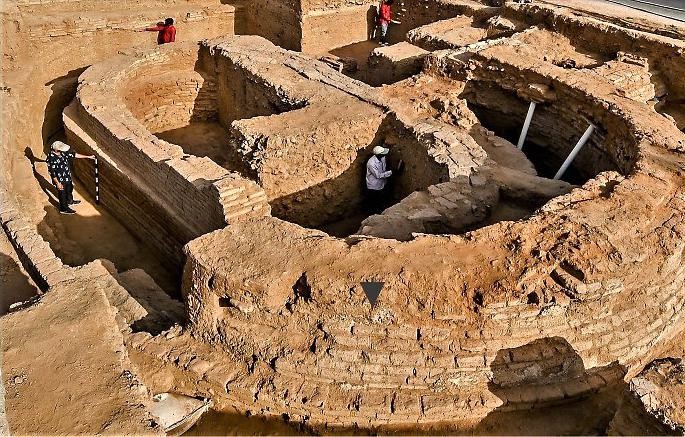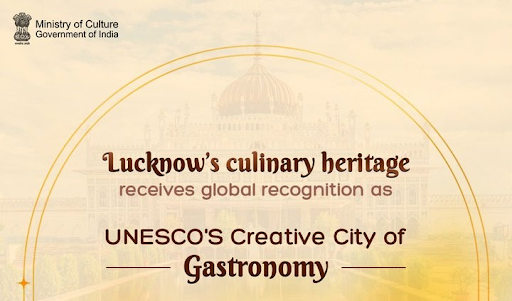Description

Disclaimer: Copyright infringement not intended.
Context
- The recent joint study conducted by five prominent institutions sheds light on the historical significance of Vadnagar, revealing it as India's oldest living city with a rich cultural continuity dating back to 800 BCE.
Details
- The study, led by scientists from the Indian Institute of Technology (IIT) Kharagpur, the Archaeological Survey of India (ASI), Physical Research Laboratory, Jawaharlal Nehru University, and Deccan College, presents compelling evidence of human settlement in Vadnagar that endured through different historical periods.
Key Findings
- Cultural Continuity:
- The excavation at Vadnagar uncovered evidence of a human settlement dating back to 800 BCE, during the late-Vedic/pre-Buddhist Mahajanapadas or oligarchic republics.
- This suggests a remarkable cultural continuity in Vadnagar, challenging the notion of a "Dark Age" in Indian history.
- Influence of Climate Changes:
- The study indicates that the rise and fall of different kingdoms over a 3,000-year period, as well as recurrent invasions by Central Asian warriors, were influenced by severe changes in climate such as rainfall or droughts.
- This highlights the interconnectedness of environmental factors with historical events.
- Multicultural and Multireligious Settlement:
- Vadnagar is described as a multicultural and multireligious settlement, with evidence of Buddhist, Hindu, Jain, and Islamic influences.
- The excavation revealed seven cultural stages, representing different historical periods, including Mauryan, Indo-Greek, Indo-Scythian, Hindu-Solankis, Sultanate-Mughal, and Gaekwad-British colonial rule.
- Archaeological Artefacts:
- The excavation unearthed a variety of archaeological artefacts, including potteries, copper, gold, silver, iron objects, intricately designed bangles, and coin moulds of the Greek king Appollodatus from the Indo-Greek rule period.
- Oldest Living City:
- Vadnagar is identified as the oldest living city within a single fortification found in India so far.
- Unpublished radiocarbon dates suggest that the settlement could be as old as 1400 BCE, challenging the traditional understanding of the Dark Age in Indian history.

About Vadnagar
Geography and Location:
- Vadnagar is a town located in the Mehsana district of Gujarat, India.
- Vadnagar is situated in the northern part of Gujarat, approximately 107 kilometers northwest of the state capital, Ahmedabad.
- It is located on the banks of the Shedhi River and is surrounded by lush greenery, adding to its picturesque setting.
Historical Significance:
Ancient Roots:
- Vadnagar has a history that dates back to ancient times, with evidence suggesting settlement during the Gupta period (4th to 6th centuries).
- The town has archaeological remains, including a stepwell and a Buddhist monastery, indicating its historical importance.
Birthplace of Prime Minister Narendra Modi:
- Vadnagar gained modern prominence as the birthplace of Narendra Modi, the 14th Prime Minister of India.
Cultural Heritage:
Hatshepsut Temple:
- Vadnagar is home to the historic Hatshepsut Temple, believed to be built during the Gupta period. The temple is dedicated to the Egyptian queen Hatshepsut and reflects the town's cultural diversity.
Tana Riri Samadhi:
- The Tana Riri Samadhi is a memorial dedicated to the saintly brothers Tana and Riri, famous for their contribution to classical music. It is an important cultural site in Vadnagar.
Hatkeswar Mahadev Temple:
- This temple dedicated to Lord Shiva is a prominent religious site in Vadnagar. The architecture and the religious festivities attract devotees and tourists alike.
Architectural Marvels:
Toran:
- Vadnagar boasts an ancient toran (ornamental arch) that is an architectural marvel. Torans are traditional arches often associated with religious and cultural significance.
Sharmishtha Lake:
- Sharmishtha Lake is a significant water body in Vadnagar, surrounded by temples and ghats. It adds to the town's aesthetic appeal.
Kirti Toran:
- Kirti Toran is an ancient archway that once marked the entrance to a Buddhist monastery. It reflects the Buddhist influence on the region.

Conclusion
The findings from the study not only redefine the historical narrative of Vadnagar but also contribute significantly to our understanding of India's ancient cultural continuity, challenging previously held notions of a Dark Age. The archaeological discoveries and the detailed analysis presented in the study underscore the importance of Vadnagar in unraveling the complexities of India's long and diverse history.
|
PRACTICE QUESTION
Q. What is the historical significance of Vadnagar, a town in Gujarat, as revealed by recent archaeological findings?
A. Birthplace of a prominent freedom fighter
B. India's oldest living city with evidence dating back to 800 BCE
C. Site of the largest medieval fortification in India
D. Location of the first-ever Buddhist Council in ancient India
Answer: B.
|















